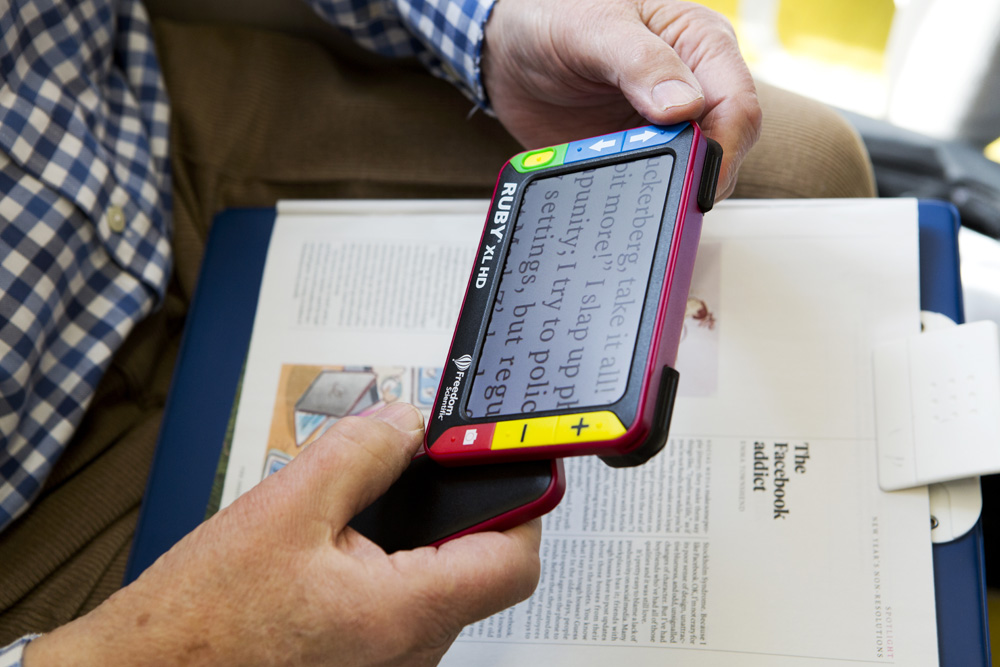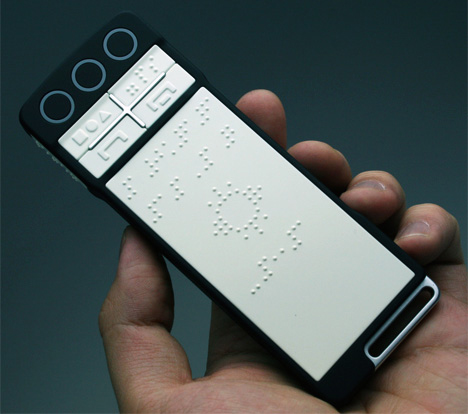Speech-to-Text Devices for Low Vision: Enhancing Ease of Use
Speech-to-Text Devices for Low Vision: Enhancing Ease of Use
Blog Article
Discover Cutting-edge Tools Created for the Visually Impaired
The growth of innovative devices for the visually impaired represents a considerable innovation in access and freedom. Technologies such as wise glasses with AI capacities and mobile applications made to give auditory descriptions are reshaping daily experiences for individuals. Additionally, wearable gadgets that employ haptic comments improve environmental awareness, while modern-day Braille technologies supply brand-new means to involve with message. As these tools remain to evolve, their effect on the lives of those with visual impairments increases vital questions about the future of inclusivity and freedom in different aspects of life. What exists in advance in this technological landscape?
Smart Glasses for Navigation

Smart glasses designed for navigating are transforming the means aesthetically damaged individuals connect with their environment. These innovative devices utilize a mix of cam technology, man-made knowledge, and auditory responses to offer real-time information concerning surroundings. By employing obstacle detection systems, clever glasses can inform users to prospective risks, making it possible for safer flexibility in both unfamiliar and acquainted setups.
The integration of GPS technology further boosts navigation abilities, enabling users to get auditory directions as they move. This hands-free technique not just fosters self-reliance however additionally encourages visually damaged people to browse metropolitan landscapes with enhanced self-confidence. In addition, numerous wise glasses are equipped with attributes that determine landmarks and street indications, giving contextual details that enhances the user experience.
Moreover, the development of these devices is continuously progressing, with business functioning to enhance the accuracy of object acknowledgment and increase the array of navigational functions. As smart glasses become a lot more obtainable and cost effective, they hold the possible to considerably transform life for visually damaged customers. Ultimately, these ingenious tools represent an important step towards inclusivity, offering boosted movement and a better sense of autonomy for people browsing the globe around them.

Mobile Apps for Daily Living
Just how can mobile applications improve the everyday lives of visually impaired people? Mobile apps are reinventing the way aesthetically damaged individuals navigate their atmospheres, handle daily jobs, and gain access to information. These applications supply necessary support via numerous performances, cultivating freedom and boosting lifestyle.
Numerous innovative mobile apps are developed especially for daily living. Applications like Be My Eyes attach aesthetically damaged customers with sighted volunteers via video clip phone calls, permitting them to receive real-time support with tasks such as reading labels or browsing unknown areas. Seeing AI, established by Microsoft, utilizes man-made knowledge to describe surroundings, reviewed text, and determine items, effectively changing a smart device into a powerful tool for daily support.
In addition, navigation apps tailored for the visually impaired, such as Aira and BlindSquare, provide audio-based instructions and ecological details, enabling individuals to traverse their environments securely and confidently. Beyond navigating and immediate aid, mobile applications likewise sustain organization and task administration, with functions that help individuals establish tips, develop order of business, and track visits. In recap, mobile applications serve as vital resources, encouraging visually impaired individuals to lead more independent and fulfilling lives.
Wearable Technologies for Support
Empowerment with innovation is significantly evident in the world of wearable gadgets made to aid aesthetically damaged people. These cutting-edge devices incorporate perfectly right into every day life, enhancing navigating and giving important comments to users. Smart glasses outfitted with electronic cameras can acknowledge faces and read message aloud, permitting customers to communicate more with confidence in social and expert setups.
One more noteworthy advancement is making use of haptic feedback systems in wearable gadgets. These systems utilize vibrations or various other responsive signals to share visit their website details concerning the user's setting, such as barriers or adjustments in surface, boosting movement and safety. Wearable innovations likewise consist of wristbands that link to smartphones, notifying individuals to notices via refined resonances, therefore boosting connectivity without dependence on visual cues.
As these modern technologies proceed to progress, they are not just boosting freedom for aesthetically damaged individuals yet also fostering a better feeling of addition in society. By bridging the void between obstacles faced in everyday living and the possibility for freedom, wearable innovations act as crucial tools in the mission for equal rights and empowerment for those with aesthetic impairments.
Sound Description Devices
Sound description devices play an important function in boosting ease of access for aesthetically damaged individuals, offering them with the capacity to involve with aesthetic media. Screen readers for the blind. These tools supply narrated descriptions of vital aesthetic elements in films, television programs, and live performances, guaranteeing that customers can fully comprehend the context and feelings conveyed with visuals
Sound description can be incorporated right into various platforms, including streaming solutions, movie theater screenings, and live cinema. Lots of prominent streaming solutions currently consist of audio description as an accessibility feature, permitting customers to choose it quickly. Along with conventional media, specialized applications likewise exist, giving audio descriptions for art events, galleries, and other cultural occasions.
The efficiency of audio summary pivots on the skill of the storytellers, who need to communicate visual Get More Information information succinctly without detracting from the original sound. Developments in this area are likewise leading the way for more customized experiences, where customers can readjust the degree of detail and pacing according to their preferences.
Braille Innovations and Instruments
Braille innovations and tools have significantly transformed the method aesthetically impaired individuals communicate with text and information. Modern advancements have resulted in the development of functional devices that improve proficiency and self-reliance among customers. Significantly, Braille show innovations have actually evolved, permitting for vibrant analysis experiences. These gadgets convert electronic text into Braille, enabling individuals to access a vast variety of info on smart devices, tablets, and computer systems.
In addition, mobile Braille notetakers incorporate standard Braille input with modern-day capabilities, helping with note-taking, organizing, and file modifying on the go. Smart glasses for the visually impaired. These portable devices typically feature text-to-speech capacities, connecting the gap in between Braille and acoustic info
Furthermore, innovative Braille printers have actually arised, allowing individuals to generate Braille labels, files, and academic products effectively. This ease of access promotes better engagement in expert and academic settings, inevitably advertising inclusivity.
Additionally, study into clever Braille innovations continues to increase. Devices that incorporate expert system are being discovered to supply real-time navigating support and contextual info, improving the customer experience in varied settings. In general, these developments mirror a commitment to encouraging visually damaged individuals through innovation, ensuring they can quickly accessibility and involve with the globe around them.

Conclusion
The advancement of ingenious tools for the visually damaged considerably boosts independence and quality of life. These technologies not only foster higher inclusion but also promote autonomy in everyday activities, inevitably adding to an extra fair and obtainable society for aesthetically impaired individuals.
As smart glasses come to be much more inexpensive and available, they hold the possible to dramatically transform daily life for visually damaged customers. Mobile applications are revolutionizing the method aesthetically damaged individuals navigate their atmospheres, take care of daily jobs, and access details. Apps like Be My Eyes connect visually damaged customers with sighted volunteers using video clip calls, permitting them to receive real-time assistance with jobs such as checking out labels or navigating unknown spaces.Additionally, navigating applications tailored important source for the visually damaged, such as Aira and BlindSquare, supply audio-based directions and ecological information, enabling customers to traverse their surroundings securely and with confidence.The innovation of innovative devices for the aesthetically damaged dramatically improves self-reliance and top quality of life.
Report this page